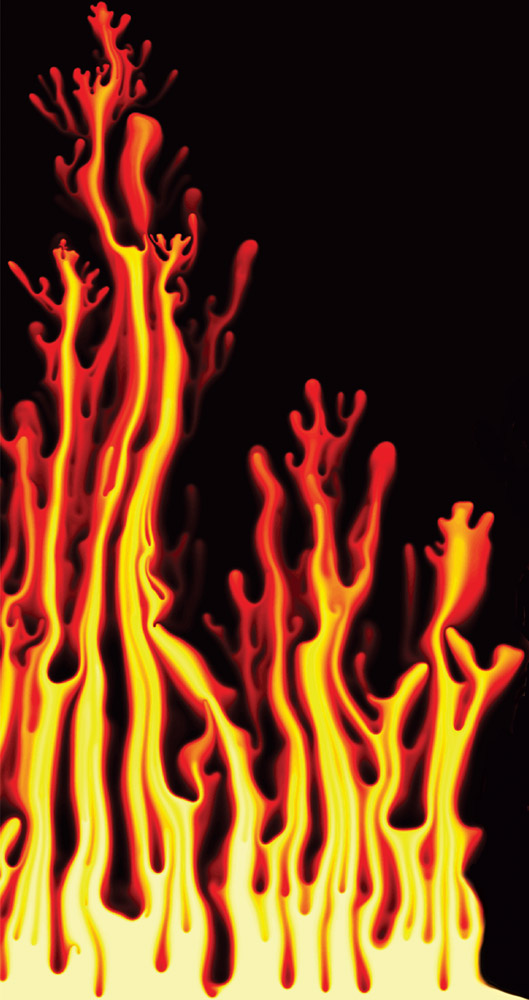Fluid mixing from viscous fingering
DOI: 10.1063/PT.3.1409
The mixing of two or more fluids has significant implications at many length scales in numerous phenomena, from the temperature profile of the ocean, to food processing, to microfluidic chemical and biological synthesis. For many situations, turbulence is a very effective mixer, but not in systems that are small, have low fluid velocities, or have high viscosities, all of which correspond to low values of the Reynolds number. In that limit, fluid mixing is a notoriously difficult problem. Ruben Juanes and colleagues at MIT have developed a new model that predicts how to improve mixing in that regime.
It’s been known for decades that the displacement of a more viscous fluid by a less viscous fluid is unstable and leads to what’s known as viscous fingering, but it was not known how the instability could affect mixing. As shown in this snapshot from one of the team’s simulations, viscous fingering can facilitate mixing by increasing the disorder and the interfacial area between the more viscous (dark) and less viscous (light) fluids. But the instability also can cause channeling of the low-viscosity fluid, which reduces the mixing efficiency. Competition between those effects results in nontrivial and nonmonotonic mixing behavior. In the spirit of turbulence modeling, the researchers have taken the coupled partial differential equations governing the system and reduced them to two first-order ordinary differential equations that capture and quantify the effect of viscous fingering on mixing. (B. Jha, L. Cueto-Felgueroso, R. Juanes, Phys. Rev. Lett.106, 194502, 2011; Phys. Rev. E, in press
To submit candidate images for Back Scatter, visit http://www.physicstoday.org/backscatter.html

Image submitted by Birendra Jha.

